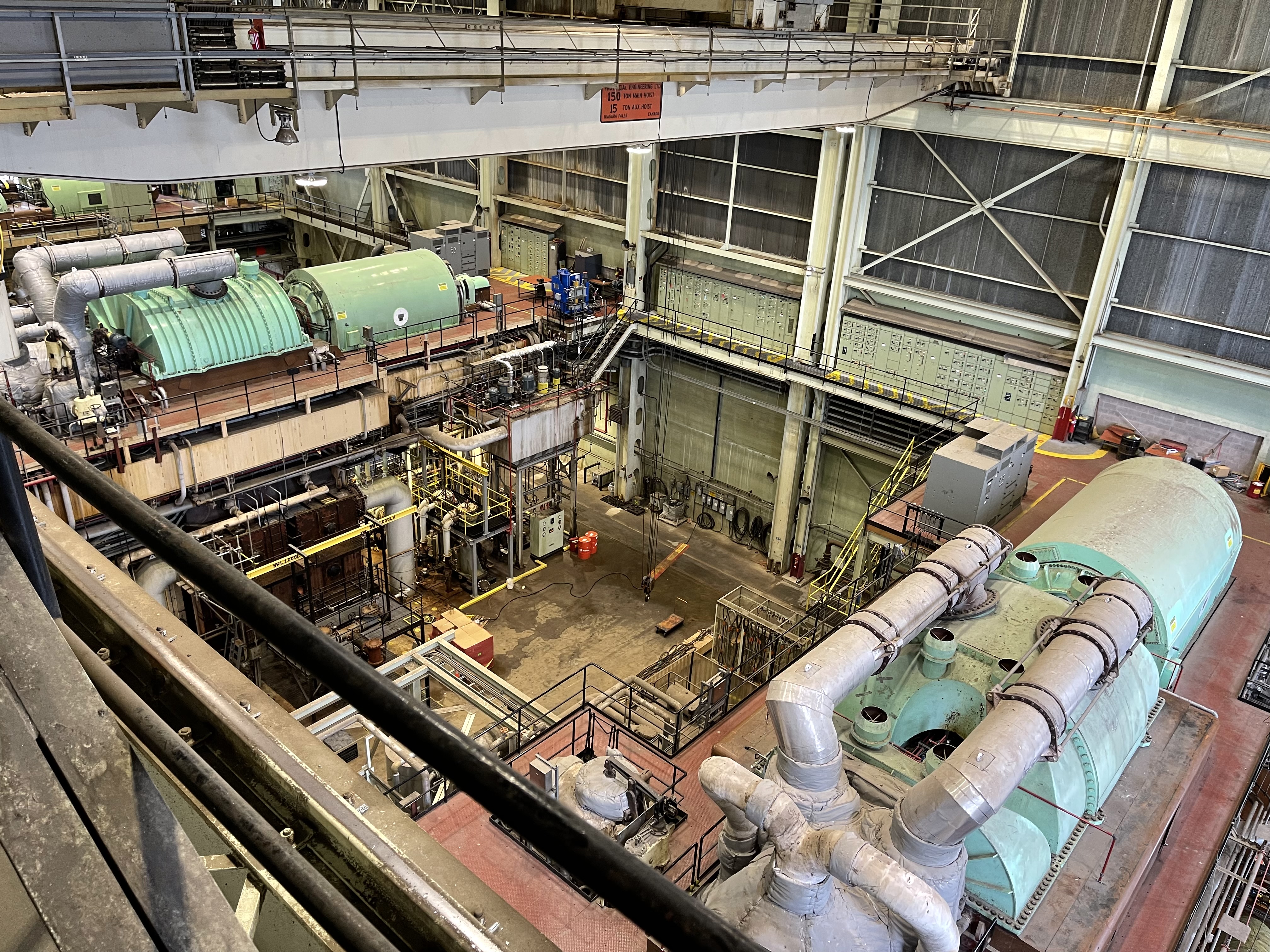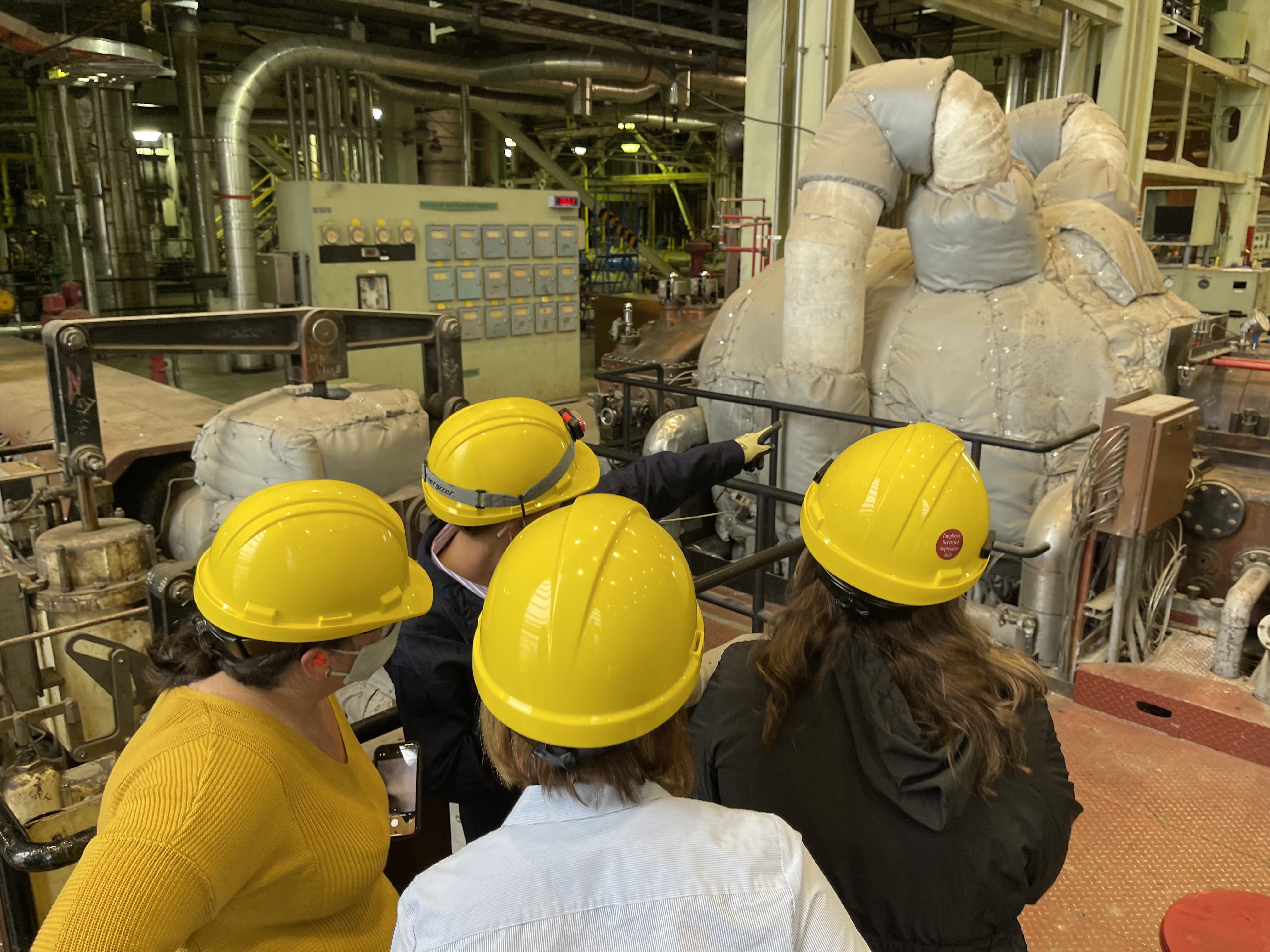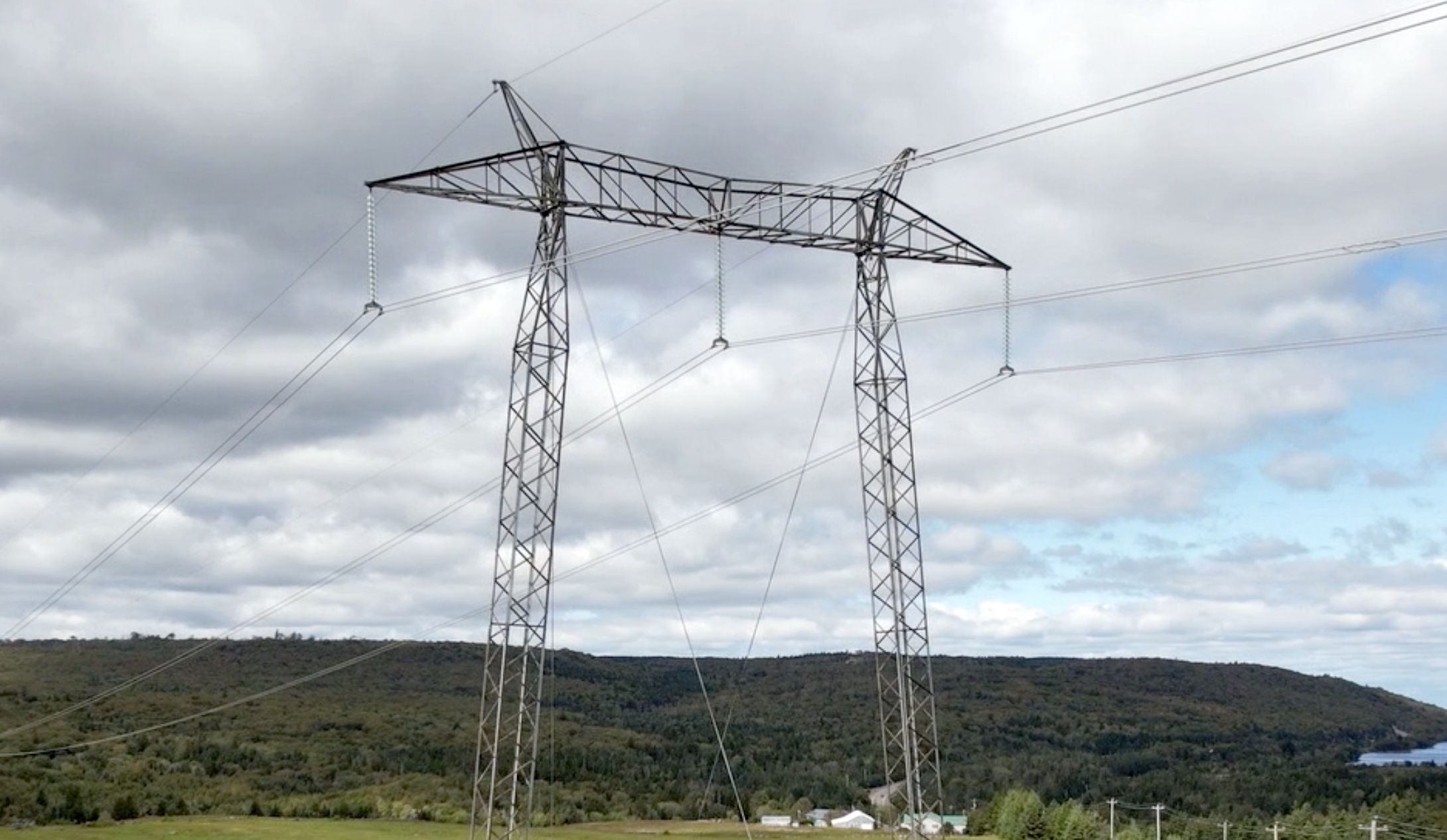Tufts Cove: Over five decades of power generation
With its eye-catching, candy-cane stacks, Tufts Cove can be considered a Dartmouth landmark. The generating station boasts a rich history of power generation, and still plays an important role in delivering reliable electricity today!
Curious about what goes on behind those stacks? We asked Lynne Drover, Tufts Cove Plant Manager, to give us the insider scoop and an exclusive look at the facility.
 Photo 1: Employees with Plant Manager, Lynne Drover (second from left), in front of Tufts Cove #2 during a site visit of the facility.
Photo 1: Employees with Plant Manager, Lynne Drover (second from left), in front of Tufts Cove #2 during a site visit of the facility.
What did the early days of Tufts Cove look like? How was the facility used?
Constructed in 1965, the generating station is located on the Dartmouth shore of the Halifax Harbour. It was the replacement plant for the Water Street Generating Station commissioned back in 1902. Its chimneys, affectionately called ‘the stacks’ by many, are used to release exhaust streams from turbine engines when generating electricity.
When first installed, Tufts Cove unit #1 had dual-fuel capability to burn both coal and heavy oil. In 1972, Tufts Cove #2 was commissioned to strictly burn oil and Tufts Cove #1 was converted to oil only. Four years later, Tufts Cove #3 was commissioned in 1976, and that’s how the three red-and-white striped stacks came to be, launching their iconic station as the tallest freestanding structures in Nova Scotia at 500-feet high a piece (tied with the Lingan and Trenton facilities). The units were later converted to also burn natural gas in 2000.
Did you know: The team at the plant operates 24/7, in non-stop shifts of power production to keep the lights on for our customers. They do that while staying very involved in their local community. Some of their community participation includes community clean-up activities in surrounding areas; throwing fundraiser events; providing plant tours for university and college students; and hosting BBQs and Breakfasts with the Boys and Girls Club on Farrell Street.
 Photo 2: Steam turbine engines # 2 and 3 heat water to high temperatures until it's converted into steam, which then turns into kinetic energy as it flows past the rotating turbine's blades inside.
Photo 2: Steam turbine engines # 2 and 3 heat water to high temperatures until it's converted into steam, which then turns into kinetic energy as it flows past the rotating turbine's blades inside.
How is power generated at Tufts Cove?
The electricity generated by Tufts Cove is produced with the help of steam turbines connected to an electrical generator (light green enclosures pictured above). The boiler uses a heat source, like natural gas, to heat water to extremely high temperatures until it’s converted into steam. As that steam flows past a turbine’s spinning blade, it expands and cools. The potential energy of the steam is then turned into kinetic energy in the rotating turbine’s blades.
The blades are designed to control the speed, direction and pressure of the steam as it passes through the turbine. Because steam turbines generate rotary motion, they’re particularly suited for driving electrical power generation. The turbines are connected to a generator with an axle, which produces energy via a magnetic field and then generates an electric current. And that’s how power is made!
Did you know: Thermal power plants use a massive amount of water to generate power and cool down equipment. Tufts Cove has its own water treatment plant to purify city water, because high quality water is essential for this high pressure, high temperature system. All run-off water is processed in an on-site wastewater treatment plant before it returns to the environment.
 Photo 3: By using more natural gas to produce electricity, Tufts Cove has phased coal out of its energy source—helping our clean transition and lowering emissions.
Photo 3: By using more natural gas to produce electricity, Tufts Cove has phased coal out of its energy source—helping our clean transition and lowering emissions.
Where does Tufts Cove fit into our clean energy transition?
Natural Gas is an important component of our generation mix today and will continue to play a role in the future as we transition to clean energy. A critical part of that transition is ensuring we have a reliable system, and to be able to back-up intermittent renewable generation like wind, to ensure that electricity is always there when our customers need it. This is especially important during peak demand periods.
Natural gas is also considered cleaner than other fossil fuels, like coal and oil, because it produces fewer air emissions. Since Tufts Cove is producing so much electricity using natural gas, less power is made using coal at our other plants, resulting in lower emissions. This has been a helpful contributing factor in our transition to cleaner energy sources to date.
Did you know: Since 2005, we have cut carbon by 34 per cent, reduced coal usage by 43 per cent and are working toward the closure of our coal units by 2030. Over the past decade, we have more than tripled our renewable generation mix to 30 per cent from just nine. We’re working towards 60 per cent clean energy by 2022.
For more information about how we make electricity, visit How We Make Electricity.
Share This Post:




 Photo 1: Employees with Plant Manager, Lynne Drover (second from left), in front of Tufts Cove #2 during a site visit of the facility.
Photo 1: Employees with Plant Manager, Lynne Drover (second from left), in front of Tufts Cove #2 during a site visit of the facility. Photo 2: Steam turbine engines # 2 and 3 heat water to high temperatures until it's converted into steam, which then turns into kinetic energy as it flows past the rotating turbine's blades inside.
Photo 2: Steam turbine engines # 2 and 3 heat water to high temperatures until it's converted into steam, which then turns into kinetic energy as it flows past the rotating turbine's blades inside. Photo 3: By using more natural gas to produce electricity, Tufts Cove has phased coal out of its energy source—helping our clean transition and lowering emissions.
Photo 3: By using more natural gas to produce electricity, Tufts Cove has phased coal out of its energy source—helping our clean transition and lowering emissions.
